Frequently asked question
Is it possible to import a generic JSON file using the JSON to Feature tool in ArcGIS Pro?
No, it is not possible to import a generic JSON file using the JSON to Feature tool in ArcGIS Pro. A generic JSON file does not follow any standard for data organization. However, GeoJSON is a specified format for encoding a variety of geographic data structures. ArcGIS products are compatible with EsriJSON files and GeoJSON files. Using a generic JSON file with the JSON to Feature tool produces an error. Refer to ArcGIS Pro: 001558: Error parsing .json file <value> for more information. As a workaround, create a spatial ETL tool to import the generic JSON file as a feature class in ArcGIS Pro.
Note: A Data Interoperability license is required to create the spatial ETL tool.
- Create a spatial ETL tool in the Catalog pane, and specify the following FME Reader and Writer parameters.
- In the Reader section, set Format to Text File.
- For Dataset, specify the JSON file. In the Select Source Text File(s) dialog box, select All files to view the JSON file.
- In the Writer section, set Format to Esri Geodatabase (File Geodb ArcObjects) to convert the JSON file to a file geodatabase feature class.
- For Dataset, browse to an existing file geodatabase to locate the converted feature class.
- Click OK. The Spatial ETL Tool window displays.
- To extract the JSON file content to feature attributes, add the JSONFragmenter transformer from the Transformer Gallery window, and connect it to Reader.
Note: To open the Transformer Gallery window, click View > Windows > Transformer Gallery.
- In the JSONFragmenter Parameters dialog box, set the JSON Attribute to text_line_data.
- For JSON Query, type json[*].
- For Flatten Query Result Into Attributes, select Yes from the drop-down list, and ensure Recursively Flatten Objects/Arrays is set to Yes.
- Right-click on the JSONFragmenter transformer > Run > Run To This.
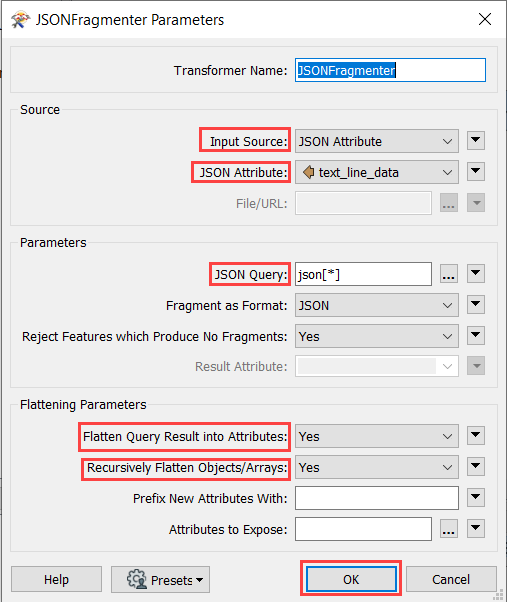
- Add the AttributeExposer transformer, and connect it to the previous transformer output.
- In the AttributeExposer Parameters dialog box, click Import > select From Feature Cache….
- From the Import Wizard dialog box, select the required attributes.
- Click Import to close the Import Wizard dialog box.
- Click OK to close the AttributeExposer Parameters dialog box.
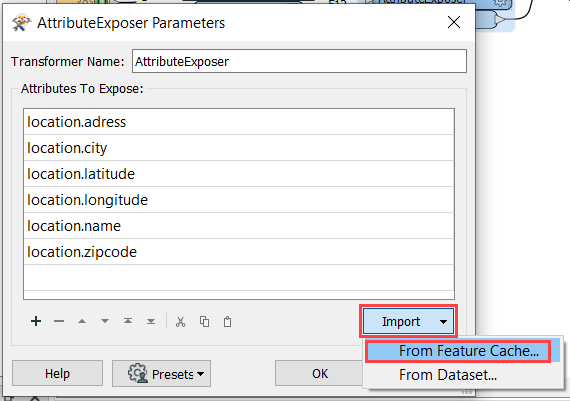
- Add the VertexCreator transformer to append the coordinates to points and connect it to the previous transformer output.
- In the VertexCreator Parameters dialog box, map the X Value and Y Value parameters with the longitude and latitude attribute values from the JSON file respectively.
- Click OK.
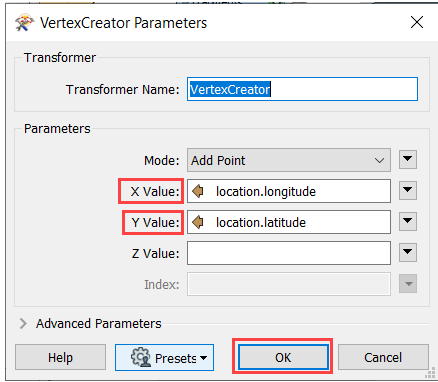
- Add a CoordinateSystemSetter transformer to tag all the features with a coordinate system. Connect it to the previous transformer output.
- In the CoordinateSystemSetter Parameters dialog box, select a value from the Coordinate System drop-down list.
- Click OK.
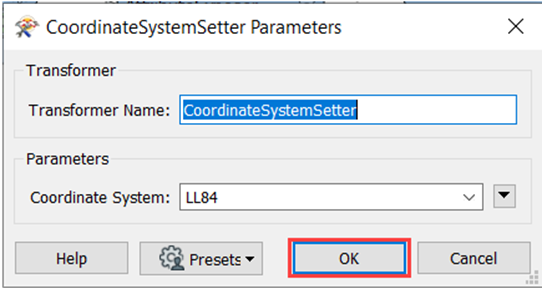
- Add an AttributeCreator transformer to import the attributes from the JSON file to output features.
- In the AttributeCreator Parameters dialog box, type the preferred field name in New Attribute.
- For Attribute Value, click the drop-down list, and select Attribute Value to select the related attributes.
- Click OK to close the AttributeCreator Parameters dialog box.
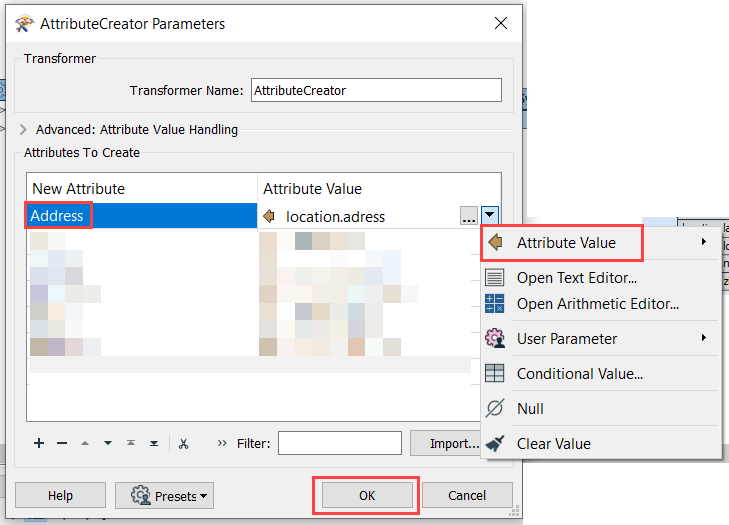
- Manually connect the output and attributes from the AttributeCreator transformer to Writer.

- Double-click Writer to edit the output feature type properties.
- In the General tab, select the Geometry type. For example, select geodb_point to convert the JSON file to a point feature class.
- Click OK.
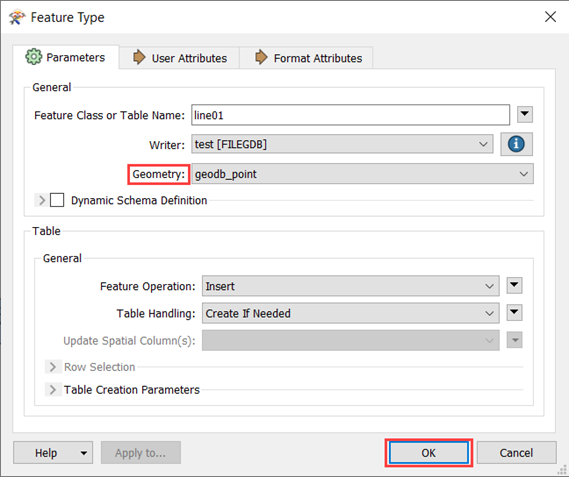
- Click the Save
 icon, and click the Run,
icon, and click the Run, icon . The output feature class is in the file geodatabase specified in Step 1d.
icon . The output feature class is in the file geodatabase specified in Step 1d. - To view the data, add the feature class in ArcGIS Pro.
The image below shows a point feature class converted from a JSON file in ArcGIS Pro.
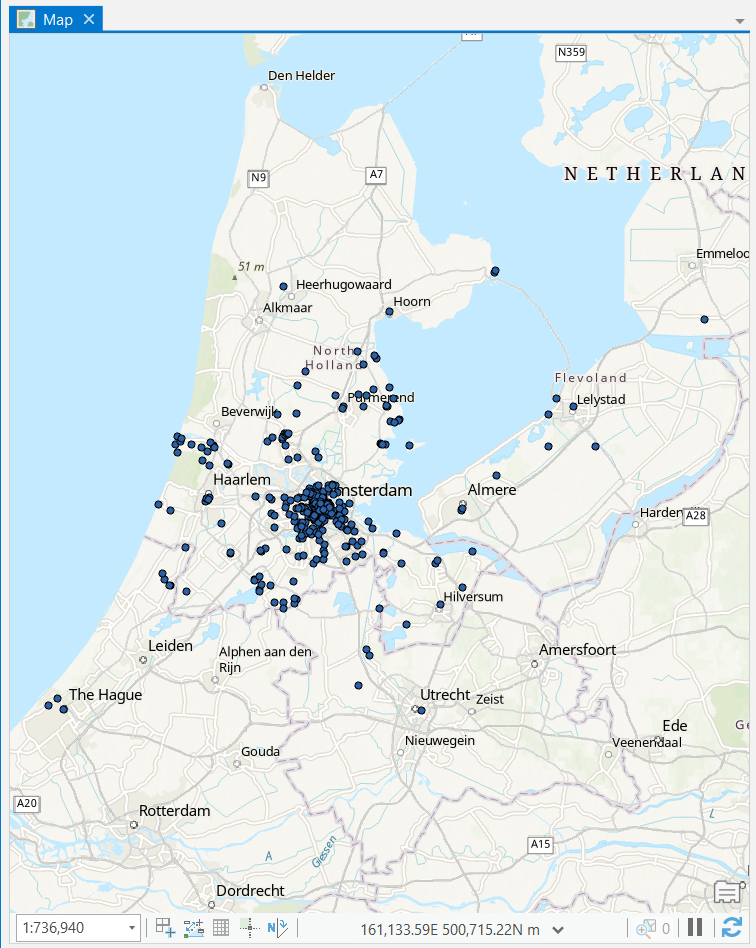
Article ID: 000025450
- Third Party Product
- ArcGIS Pro 2 7 x
- ArcGIS Pro 2 x
Get help from ArcGIS experts
Start chatting now

